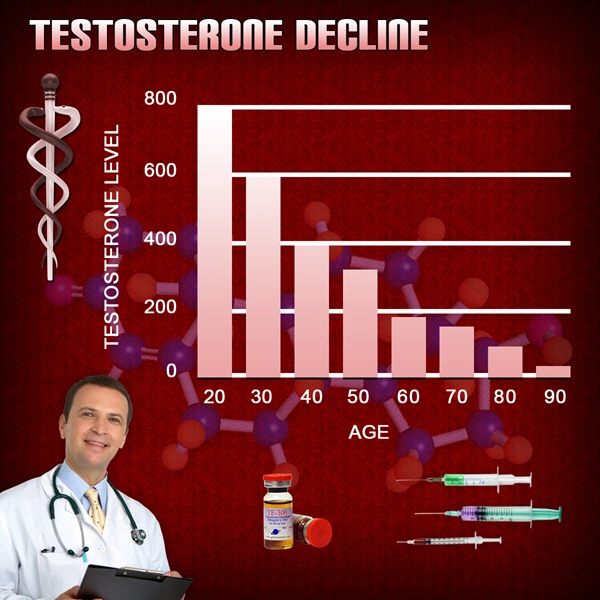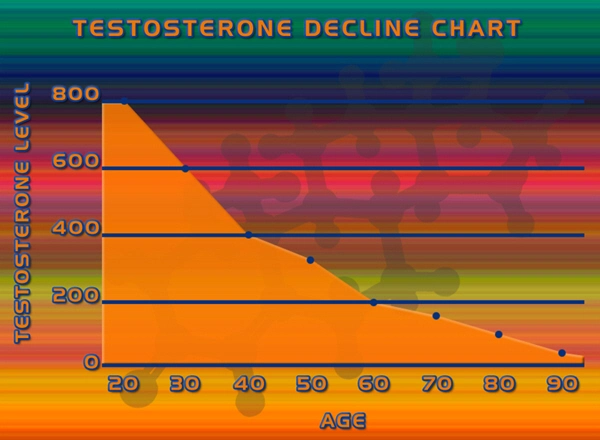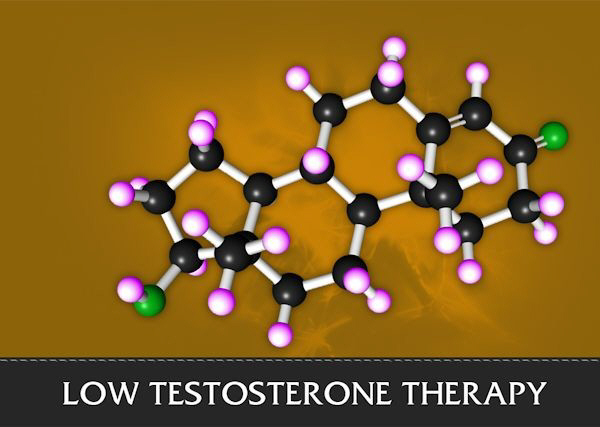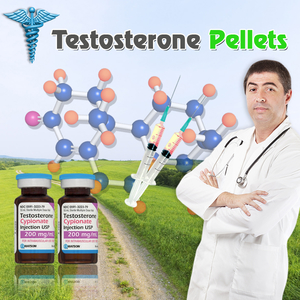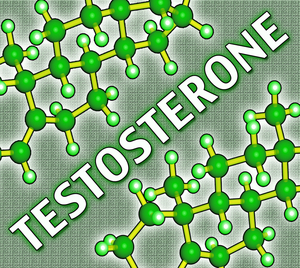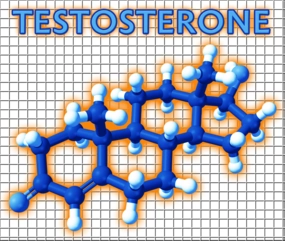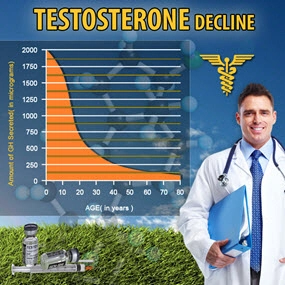Introduction to Vardenafil and Its Role in Treating Erectile Dysfunction
Erectile dysfunction (ED) is a common condition that affects a significant number of American males, impacting their quality of life and self-esteem. Vardenafil, marketed under brand names such as Levitra and Staxyn, is a phosphodiesterase type 5 (PDE5) inhibitor that has emerged as an effective treatment for ED. This article delves into the physiology of erectile dysfunction and elucidates how vardenafil works to restore sexual function.
Understanding the Physiology of an Erection
The process of achieving an erection involves a complex interplay of neurological, vascular, and hormonal factors. When a man is sexually stimulated, the brain sends signals through the nervous system to the penis. These signals trigger the release of nitric oxide (NO) in the penile tissue. NO then activates an enzyme called guanylate cyclase, which increases the levels of cyclic guanosine monophosphate (cGMP). This molecule is crucial as it relaxes the smooth muscles of the penile arteries and corpora cavernosa, allowing blood to flow into the penis and cause an erection.
The Role of PDE5 in Erectile Dysfunction
In men with erectile dysfunction, the enzyme phosphodiesterase type 5 (PDE5) can break down cGMP prematurely, leading to insufficient blood flow and difficulty in maintaining an erection. PDE5 inhibitors like vardenafil work by selectively blocking this enzyme, thereby prolonging the effects of cGMP and enhancing the erectile response.
How Vardenafil Works to Treat ED
Vardenafil is designed to inhibit PDE5, allowing cGMP to accumulate and sustain the vasodilatory effects necessary for an erection. By doing so, vardenafil enhances the natural erectile process triggered by sexual stimulation. Unlike some other PDE5 inhibitors, vardenafil has a rapid onset of action, often within 25-60 minutes, making it a convenient option for many men.
Levitra and Staxyn: Different Formulations of Vardenafil
Levitra is an oral tablet that is taken with water, while Staxyn is an orally disintegrating tablet that dissolves on the tongue without the need for water. Both formulations contain vardenafil and work in the same way to treat ED. The choice between Levitra and Staxyn may depend on individual preferences and lifestyle factors.
Clinical Efficacy and Safety Profile
Clinical studies have demonstrated that vardenafil is effective in improving erectile function in a majority of men with ED. It has a favorable safety profile, with common side effects including headache, flushing, and nasal congestion. As with any medication, it is important for patients to consult with their healthcare provider to ensure vardenafil is appropriate for their specific health needs.
Conclusion: Enhancing Quality of Life with Vardenafil
Vardenafil offers a reliable and effective treatment option for American males suffering from erectile dysfunction. By understanding the physiological mechanisms behind ED and how vardenafil works to counteract these issues, men can make informed decisions about their sexual health. With the availability of different formulations like Levitra and Staxyn, vardenafil provides flexibility and convenience, ultimately contributing to an improved quality of life.
In summary, vardenafil represents a significant advancement in the management of erectile dysfunction, offering hope and efficacy to those affected by this common condition.
Contact Us Today For A Free Consultation

- Unraveling the Power of Potency: The Brilliant Inception of Levitra [Last Updated On: February 25th, 2025] [Originally Added On: February 25th, 2025]
- Rapid Triumph of Staxyn: A Revolutionary Game-Changer in Erectile Dysfunction Treatment [Last Updated On: February 26th, 2025] [Originally Added On: February 26th, 2025]
- Understanding Vardenafil: A Comparative Analysis of Levitra and Staxyn [Last Updated On: February 27th, 2025] [Originally Added On: February 27th, 2025]
- Unveiling the Wizardry of Vardenafil: A Scientific Journey from Laboratory to Lifestyle Solutions [Last Updated On: February 28th, 2025] [Originally Added On: February 28th, 2025]
- Revolutionizing Therapeutic Interventions: The Levitra Narrative [Last Updated On: February 28th, 2025] [Originally Added On: February 28th, 2025]
- Unveiling Staxyn: A Pioneer in On-Demand Erectile Dysfunction Treatment [Last Updated On: March 1st, 2025] [Originally Added On: March 1st, 2025]
- Introduction Into PDE5 Inhibitors And Erectile Dysfunction Treatment [Last Updated On: March 2nd, 2025] [Originally Added On: March 2nd, 2025]
- Comparative Analysis of Levitra and Staxyn: Evaluating Vardenafil-Based Medications for Erectile Dysfunction Treatment [Last Updated On: March 3rd, 2025] [Originally Added On: March 3rd, 2025]
- Navigating the Landscape of Erectile Dysfunction: A Comprehensive Comparison of Vardenafil and Its Alternatives [Last Updated On: March 3rd, 2025] [Originally Added On: March 3rd, 2025]
- Vardenafil's Transformative Impact on Erectile Dysfunction Treatment [Last Updated On: March 4th, 2025] [Originally Added On: March 4th, 2025]
- Levitra's Role in Enhancing Erectile Dysfunction Treatment and Quality of Life [Last Updated On: March 5th, 2025] [Originally Added On: March 5th, 2025]
- Staxyn: A Quick-Acting, Discreet Option for Treating Erectile Dysfunction [Last Updated On: March 6th, 2025] [Originally Added On: March 6th, 2025]
- Understanding Vardenafil: A Comprehensive Guide to Levitra for Erectile Dysfunction Treatment [Last Updated On: March 7th, 2025] [Originally Added On: March 7th, 2025]
- Understanding Vardenafil: A Comprehensive Guide to Treating Erectile Dysfunction Safely and Effectively [Last Updated On: March 8th, 2025] [Originally Added On: March 8th, 2025]
- Levitra: Pivotal Role in Men's Health - Efficacy, Benefits, and Future Perspectives [Last Updated On: March 9th, 2025] [Originally Added On: March 9th, 2025]
- Unveiling the Power of Vardenafil: Real-Life Success with Levitra and Staxyn [Last Updated On: March 9th, 2025] [Originally Added On: March 9th, 2025]
- Unlocking the Speed of Staxyn: The Science Behind Fast-Dissolving ED Medication [Last Updated On: March 12th, 2025] [Originally Added On: March 12th, 2025]
- Exploring the Versatility of Vardenafil in Treating Erectile Dysfunction in American Men [Last Updated On: March 13th, 2025] [Originally Added On: March 13th, 2025]
- Vardenafil: Dosage, Benefits, and Precautions for Treating Erectile Dysfunction [Last Updated On: March 14th, 2025] [Originally Added On: March 14th, 2025]
- Navigating the Conversation: A Guide to Discussing Vardenafil for Erectile Dysfunction with Your Doctor [Last Updated On: March 15th, 2025] [Originally Added On: March 15th, 2025]
- Vardenafil: Potent ED Solution with Levitra and Staxyn's Unique Features [Last Updated On: March 17th, 2025] [Originally Added On: March 17th, 2025]
- Vardenafil: Empowering American Men to Overcome Erectile Dysfunction [Last Updated On: March 17th, 2025] [Originally Added On: March 17th, 2025]
- Vardenafil: A Comprehensive Overview of Levitra and Staxyn for Erectile Dysfunction Treatment [Last Updated On: March 18th, 2025] [Originally Added On: March 18th, 2025]
- Levitra and Vardenafil: Revolutionizing ED Treatment in America [Last Updated On: March 18th, 2025] [Originally Added On: March 18th, 2025]
- Staxyn: Fast-Acting ED Solution for Modern American Men's Busy Lifestyles [Last Updated On: March 19th, 2025] [Originally Added On: March 19th, 2025]
- Levitra and Staxyn: Understanding ED Treatment and Managing Side Effects Effectively [Last Updated On: March 19th, 2025] [Originally Added On: March 19th, 2025]
- Staxyn: Rapid-Onset Vardenafil for Effective ED Treatment in American Males [Last Updated On: March 20th, 2025] [Originally Added On: March 20th, 2025]
- Vardenafil: Innovations and Trends in Treating Erectile Dysfunction [Last Updated On: March 21st, 2025] [Originally Added On: March 21st, 2025]
- Staxyn, Levitra, Vardenafil: Transforming Lives of American Men with ED [Last Updated On: March 21st, 2025] [Originally Added On: March 21st, 2025]
- Vardenafil: Balancing Sexual Health Benefits with Cardiovascular Risks in American Men [Last Updated On: March 21st, 2025] [Originally Added On: March 21st, 2025]
- Debunking Myths: Understanding Vardenafil's Role in Treating Erectile Dysfunction [Last Updated On: March 21st, 2025] [Originally Added On: March 21st, 2025]
- Comparing Levitra, Staxyn, and Generic Vardenafil for Effective ED Treatment [Last Updated On: March 22nd, 2025] [Originally Added On: March 22nd, 2025]
- Levitra vs. Staxyn: Personalized ED Treatment Options for American Men [Last Updated On: March 22nd, 2025] [Originally Added On: March 22nd, 2025]
- Vardenafil: Enhancing Sexual Health with Levitra and Staxyn [Last Updated On: March 22nd, 2025] [Originally Added On: March 22nd, 2025]
- Staxyn: Fast-Acting ED Solution for Busy American Men [Last Updated On: March 22nd, 2025] [Originally Added On: March 22nd, 2025]
- Vardenafil: Enhancing Life Beyond ED for American Males [Last Updated On: March 22nd, 2025] [Originally Added On: March 22nd, 2025]
- Vardenafil Variants: Levitra, Staxyn, and Generic Options for Treating Erectile Dysfunction [Last Updated On: March 23rd, 2025] [Originally Added On: March 23rd, 2025]
- Staxyn: Revolutionizing ED Treatment with Orally Disintegrating Vardenafil Tablets [Last Updated On: March 23rd, 2025] [Originally Added On: March 23rd, 2025]
- Levitra and Staxyn: Efficacy, Safety, and Satisfaction in Treating Erectile Dysfunction [Last Updated On: March 23rd, 2025] [Originally Added On: March 23rd, 2025]
- Staxyn: Effective ED Treatment, Usage Guidelines, and Safety Tips [Last Updated On: March 23rd, 2025] [Originally Added On: March 23rd, 2025]
- Staxyn: Vardenafil-Based ED Treatment with Unique Oral Disintegration [Last Updated On: March 23rd, 2025] [Originally Added On: March 23rd, 2025]
- Staxyn: Fast-Acting Vardenafil for Erectile Dysfunction - Benefits and Usage Guide [Last Updated On: March 23rd, 2025] [Originally Added On: March 23rd, 2025]
- Staxyn: Rapid Relief for ED with Vardenafil's Quick Action [Last Updated On: March 24th, 2025] [Originally Added On: March 24th, 2025]
- Levitra: Enhancing Sexual Health and Emotional Intimacy in American Males [Last Updated On: March 24th, 2025] [Originally Added On: March 24th, 2025]
- Levitra and Heart Health: Risks, Precautions, and Safe Use for American Males [Last Updated On: March 24th, 2025] [Originally Added On: March 24th, 2025]
- Staxyn: Revolutionizing ED Treatment with Vardenafil's Fast-Acting ODT Formulation [Last Updated On: March 24th, 2025] [Originally Added On: March 24th, 2025]
- Erectile Dysfunction: Understanding Levitra, Vardenafil, Staxyn Treatments and Holistic Management [Last Updated On: March 24th, 2025] [Originally Added On: March 24th, 2025]
- Levitra and Staxyn: Enhancing ED Management with Diet, Exercise, and Psychological Support [Last Updated On: March 24th, 2025] [Originally Added On: March 24th, 2025]
- Vardenafil: Enhancing Sexual Health with Levitra and Staxyn Variants [Last Updated On: March 24th, 2025] [Originally Added On: March 24th, 2025]
- Staxyn: Managing Interactions for Optimal ED Treatment in American Men [Last Updated On: March 25th, 2025] [Originally Added On: March 25th, 2025]
- Vardenafil's Evolution: From Levitra to Staxyn in Treating American Men's ED [Last Updated On: March 25th, 2025] [Originally Added On: March 25th, 2025]
- Levitra and Staxyn: Effective ED Solutions and Usage Guidelines [Last Updated On: March 25th, 2025] [Originally Added On: March 25th, 2025]
- Vardenafil: Effective Treatment for Diabetic Erectile Dysfunction in American Men [Last Updated On: March 25th, 2025] [Originally Added On: March 25th, 2025]
- Levitra and Staxyn: Boosting Sexual Confidence and Enhancing Life Quality [Last Updated On: March 26th, 2025] [Originally Added On: March 26th, 2025]
- Vardenafil: Beyond ED - Cardiovascular, Mental, and Prostate Health Benefits for Men [Last Updated On: March 26th, 2025] [Originally Added On: March 26th, 2025]
- Vardenafil vs. Viagra: Efficacy, Onset, Duration, and Safety for American Men with ED [Last Updated On: March 27th, 2025] [Originally Added On: March 27th, 2025]
- Levitra and Staxyn: Revolutionizing ED Treatment in American Men [Last Updated On: March 27th, 2025] [Originally Added On: March 27th, 2025]
- Levitra and Staxyn: A Comprehensive Guide for Managing Erectile Dysfunction [Last Updated On: March 27th, 2025] [Originally Added On: March 27th, 2025]
- Staxyn and Vardenafil: Usage, Dosage, and Efficacy for American Men with ED [Last Updated On: March 27th, 2025] [Originally Added On: March 27th, 2025]
- Vardenafil: Enhancing Sexual Performance and Confidence in American Males [Last Updated On: March 27th, 2025] [Originally Added On: March 27th, 2025]
- Levitra and Variants: Transforming ED Treatment with Expert Insights [Last Updated On: March 28th, 2025] [Originally Added On: March 28th, 2025]
- Staxyn and Telemedicine: Revolutionizing ED Treatment for American Men [Last Updated On: March 28th, 2025] [Originally Added On: March 28th, 2025]
- Levitra: Enhancing Mental Health and Overcoming ED Stigma in American Men [Last Updated On: March 28th, 2025] [Originally Added On: March 28th, 2025]
- Vardenafil Dosage Guide: Levitra, Generic, and Staxyn for ED Treatment [Last Updated On: March 29th, 2025] [Originally Added On: March 29th, 2025]
- Vardenafil's Role in Managing Erectile Dysfunction in Aging Men: Levitra and Staxyn [Last Updated On: March 29th, 2025] [Originally Added On: March 29th, 2025]
- Levitra vs. Staxyn: Vardenafil Formulations and Their Impact on ED Treatment [Last Updated On: March 29th, 2025] [Originally Added On: March 29th, 2025]
- Vardenafil: Enhancing Sexual Health in American Men - Efficacy, Safety, and Usage [Last Updated On: March 29th, 2025] [Originally Added On: March 29th, 2025]
- Staxyn: Revolutionizing ED Treatment with Rapid-Acting Oral Disintegrating Tablets [Last Updated On: March 29th, 2025] [Originally Added On: March 29th, 2025]
- Managing Erectile Dysfunction: Insights on Levitra, Vardenafil, Staxyn, and Doctor Communication [Last Updated On: March 30th, 2025] [Originally Added On: March 30th, 2025]
- Vardenafil: Enhancing Libido and Sexual Health in American Men with Levitra and Staxyn [Last Updated On: March 30th, 2025] [Originally Added On: March 30th, 2025]
- Vardenafil's Future: Advancements in ED Treatment and Delivery Systems [Last Updated On: March 30th, 2025] [Originally Added On: March 30th, 2025]
- Levitra and Staxyn: Cost Analysis, Insurance, and Economic Impact for ED Treatment [Last Updated On: April 1st, 2025] [Originally Added On: April 1st, 2025]
- Vardenafil: Treating ED in American Males - Side Effects and Management [Last Updated On: April 3rd, 2025] [Originally Added On: April 3rd, 2025]
- Staxyn: Fast-Acting ED Solution with Vardenafil, Enhancing Men's Sexual Health [Last Updated On: April 5th, 2025] [Originally Added On: April 5th, 2025]
- Vardenafil: Tailoring ED Treatment to Modern American Men's Lifestyles [Last Updated On: April 6th, 2025] [Originally Added On: April 6th, 2025]
- Media Influence on American Males' Use of Levitra and Staxyn for ED Treatment [Last Updated On: April 7th, 2025] [Originally Added On: April 7th, 2025]
- Staxyn: Revolutionizing ED Treatment with Rapid-Acting Vardenafil ODT [Last Updated On: April 9th, 2025] [Originally Added On: April 9th, 2025]
- Staxyn: A Convenient, Effective ED Treatment with Faster Onset [Last Updated On: April 9th, 2025] [Originally Added On: April 9th, 2025]
- Staxyn: Revolutionizing ED Treatment with Rapid-Onset Orally Disintegrating Tablets [Last Updated On: April 9th, 2025] [Originally Added On: April 9th, 2025]
- Vardenafil: Enhancing Sexual Vitality and Confidence in Men with ED [Last Updated On: April 10th, 2025] [Originally Added On: April 10th, 2025]
Word Count: 507

